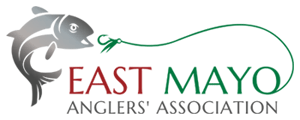Please find attached a copy of the recent Habitat Management Plan that the Wild Trout Trust completed on EMAA water and associated tributaries. This Habitats Management Plan (See the link below) was funded by grants obtained from IFI. The visit of the Wild Trout Trust took place in the late summer of 2022 and our water keeper John Ruane accompanied Gareth Pedley of the Wild Trout Trust over a few days covering all our water. Gareth visited a lot of the tributaries feeding into the main channel and we now attach a copy of the plan.
The hope is that the club will commence to seek grant funding towards carrying out some of these measures in 2023, with water trough removal being one of the ‘easy wins’ we hope to achieve this year. Tackling the more challenging measures included in the plan, over a medium to longer term, will bring with it more onerous criteria to qualify measures that focus on ‘in stream ‘works.
Upon reading the document you will see that the recommendations generally focus on habitat restoration as well as practical angling measures the club has a responsibility to bring about to ensure that returning salmon stocks have a greater degree of protection.
The Moy drainage scheme has had a lasting effect on the spawning habitat by removing the substrate that once helped form the ‘reds’ both Salmon and Trout created. Coupled with this the fishery will focus on establishing suitable habitat for Salmon Parr to remain safe from predators using vegetation and tree cover before their journey to the estuary.
The club will, as a result of this report work on behalf of the members to ensure that a greater focus is placed upon ‘catch and release ‘measures and will also hope to lead the way in ensuring that Spring Salmon are given greater protection into the future. We all have a part to play in this and as a result we would ask each member to take the time to review this document.
We cannot continue to ignore the stark reality that faces us all as Anglers and old behaviours and attitudes must now be replaced by firstly accepting the status quo must change combined with a science-based approach to doing all we can as a club.
Please feel free to offer any suggestions and assistance you feel would benefit the club. We will continue to work with our landowners who are ultimately the custodians of the lands and watercourses that feed into the river. In some areas, past habitat works like groynes may have improved conditions within the degraded channel, but many are now likely to be inhibiting the natural recovery of the channel.
There is great scope for major channel restoration schemes on many areas of the tributaries, with options including realignment back to the original meandering course and installation of coarse bed material to create riffles and increased spawning habitat.
As evident, through the habitat assessment site visits, most areas of watercourses visited held fish, with some supporting good numbers. Those fish populations are likely to be further improved through sympathetic management of their habitat and sympathetic angling practices.
In addition to the existing salmon fishery, there is good potential to develop fishing for wild trout on both the main river and larger tributaries, providing that angler exploitation can be managed effectively through catch and release to allow fish to attain their full size potential – being productive limestone rivers, that is significant (>1.5kg) on some watercourses.
Download and read the Habitat Management Plan here.
Signed on behalf of EMAA
Ben Baynes
Club Chairman
EMAA

